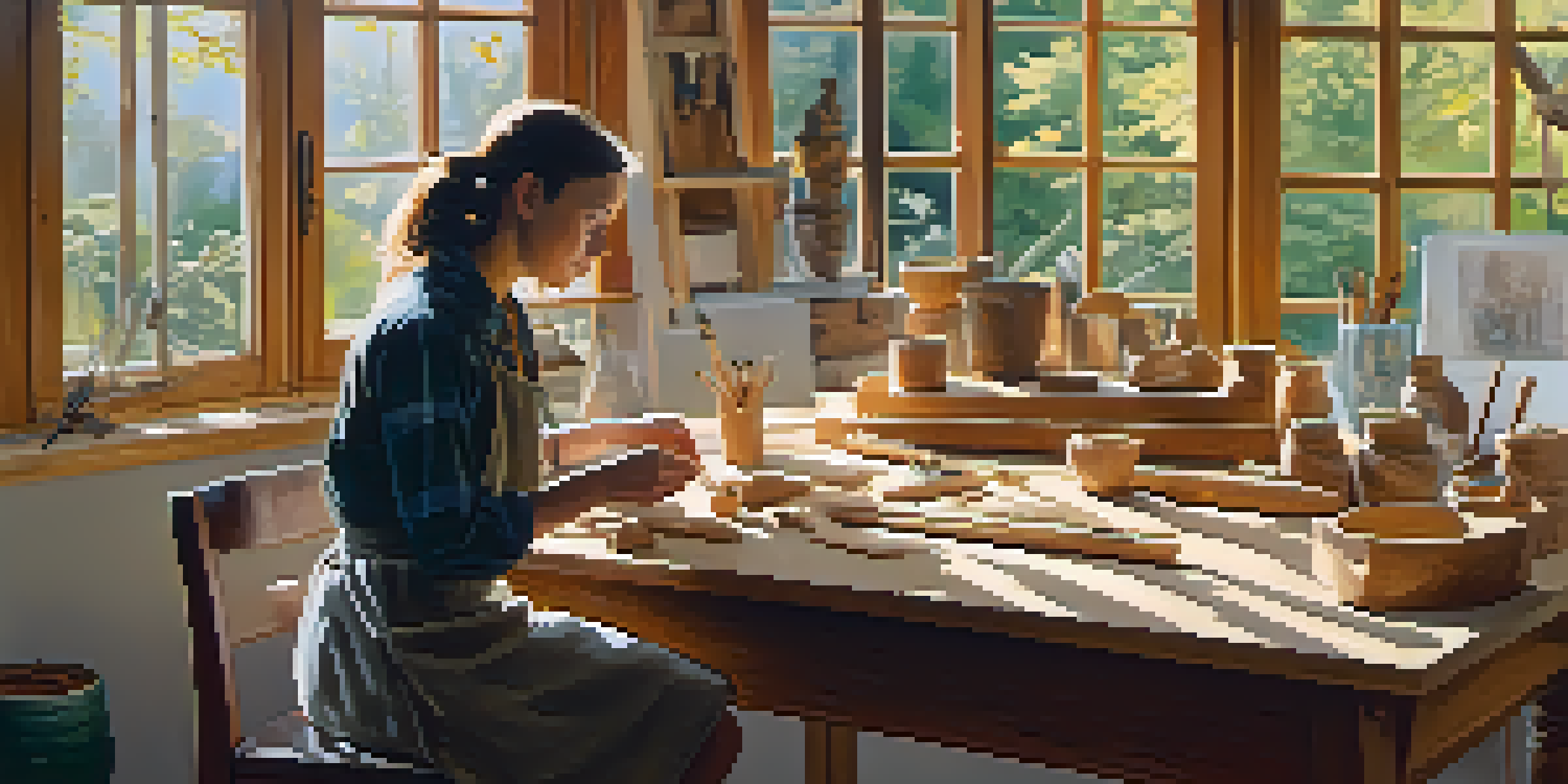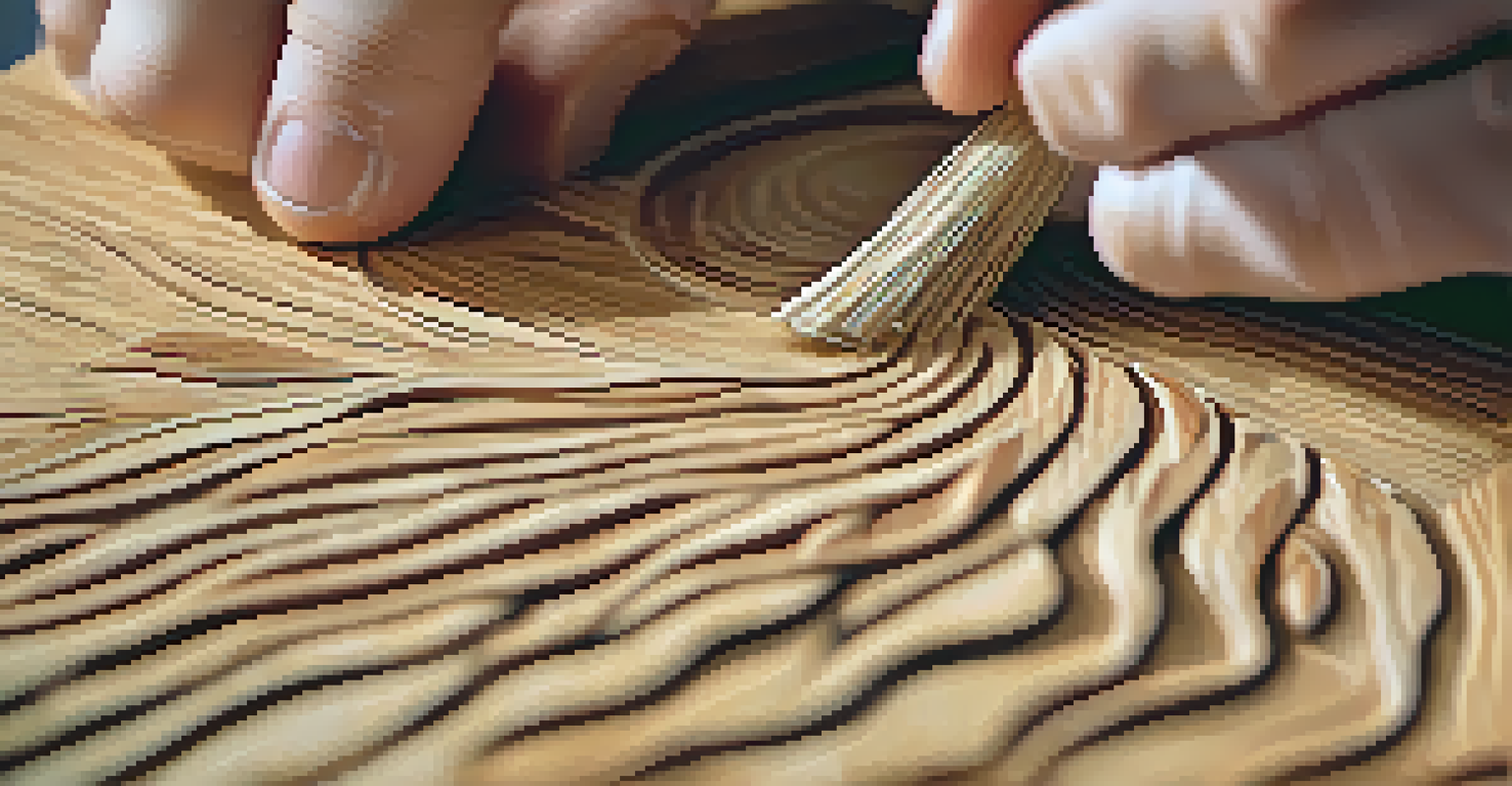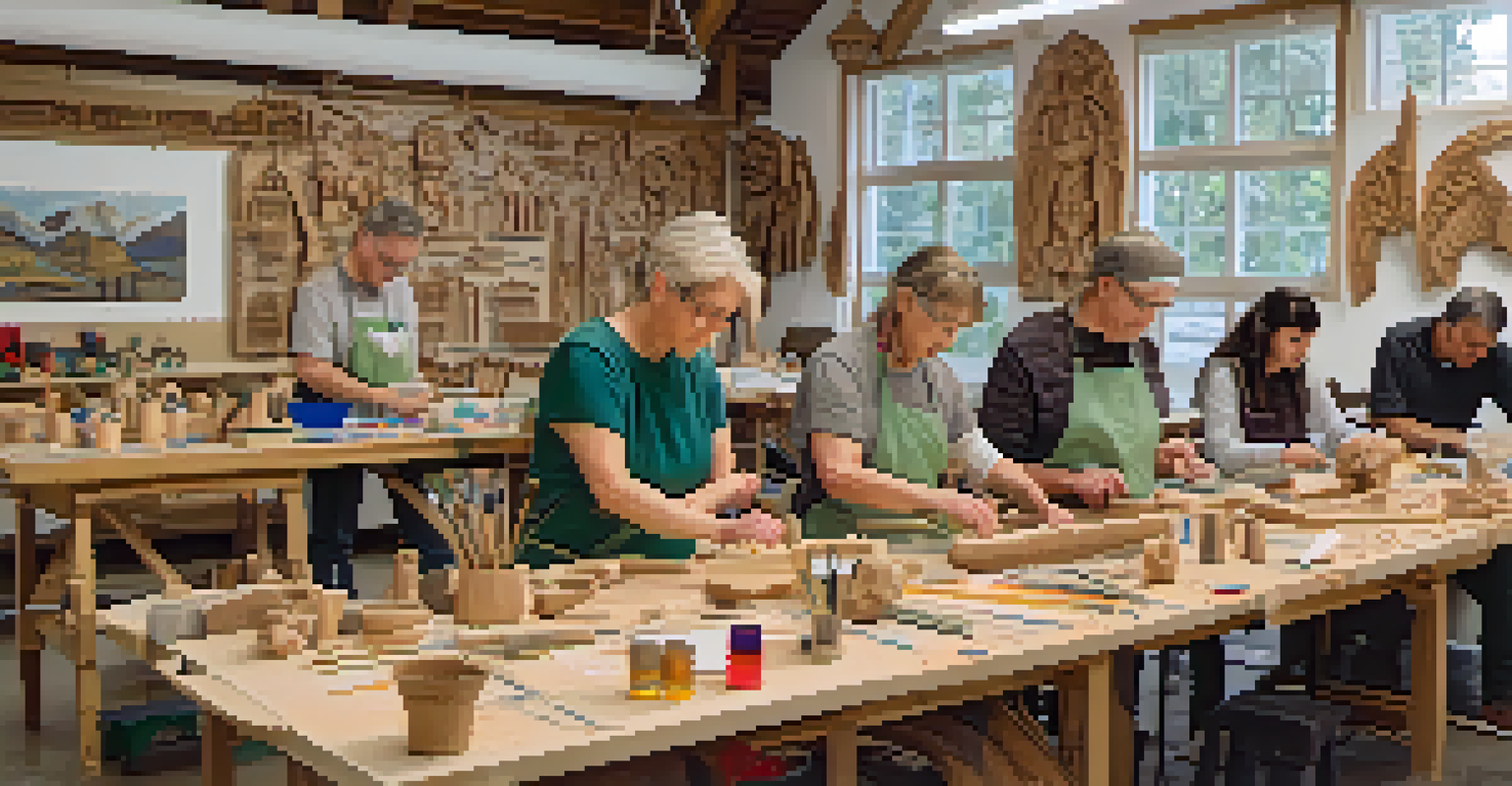Integrating Carving into Occupational Therapy Practices

Understanding the Benefits of Carving in Therapy
Carving, an art form that involves shaping materials like wood, offers unique therapeutic benefits. It engages both the mind and body, promoting fine motor skills and cognitive function. For many patients, this hands-on activity can be a joyful escape from traditional therapy methods.
Art is the most beautiful of all lies.
The rhythmic motion of carving can also be meditative, helping to reduce anxiety and improve focus. This aspect is particularly beneficial for individuals dealing with stress, as it encourages mindfulness. As they immerse themselves in the process, patients often experience a sense of accomplishment and self-expression.
Moreover, carving can enhance social interaction when practiced in group settings. Sharing techniques and creations fosters community and support among participants, which is essential in occupational therapy. This social dimension can significantly improve emotional well-being.
Incorporating Carving Into Therapy Sessions
Integrating carving into occupational therapy requires thoughtful planning and adaptability. Therapists can start by assessing each patient's abilities and interests, ensuring that the activity aligns with their therapeutic goals. For instance, a patient focused on improving hand strength might benefit from using specific carving tools.

Sessions can be structured to include warm-up exercises that prepare the hands and mind for carving. Following this, therapists can introduce simple projects, gradually increasing complexity based on patient progress. This gradual approach helps build confidence and skill without overwhelming participants.
Carving Enhances Motor Skills
The precise movements in carving significantly improve dexterity and hand-eye coordination, aiding recovery for patients with hand functionality issues.
Additionally, incorporating feedback and encouragement throughout the process is vital. Therapists should celebrate small victories, such as mastering a new technique or completing a project. This positive reinforcement not only boosts morale but also fosters a deeper commitment to the therapeutic process.
Choosing the Right Tools and Materials
Selecting appropriate tools and materials is crucial for a successful carving experience. Beginners often benefit from soft woods, such as basswood, which are easier to manipulate and less likely to cause injury. It’s also important to provide tools that fit comfortably in the hands of each participant, promoting safety and ease of use.
Creativity takes courage.
Safety is paramount when introducing carving to therapy sessions. Therapists should demonstrate proper handling of tools and establish clear guidelines for their use. Incorporating protective gear, like gloves or finger guards, can further minimize risks while fostering a safe learning environment.
In addition to traditional wood carving, therapists can explore alternative materials like soapstone or even clay. These options can spark creativity and allow patients to experiment with different techniques. Offering variety can keep sessions fresh and exciting, increasing engagement.
Building Fine Motor Skills Through Carving
One of the key benefits of carving is its ability to enhance fine motor skills. The precise movements required for carving can significantly improve dexterity and hand-eye coordination. This is particularly beneficial for patients recovering from injuries or surgeries that affect hand functionality.
As patients practice carving, they develop muscle strength and control, which are essential for daily activities. Tasks like buttoning a shirt or using utensils become more manageable as their skills improve. This practical application of therapy helps reinforce the value of their efforts in a meaningful way.
Carving Fosters Self-Expression
Engaging in carving allows patients to express their emotions through tangible creations, enriching their therapeutic experience.
Therapists can track progress by setting specific goals related to fine motor skills. For instance, a patient might aim to complete a detailed carving project within a set timeframe. This goal-oriented approach not only motivates patients but also provides measurable outcomes for therapists to assess.
Encouraging Creativity and Self-Expression
Carving is a powerful medium for self-expression, allowing patients to channel their emotions into tangible creations. This aspect of therapy can be particularly valuable for individuals who struggle to articulate their feelings verbally. By shaping materials, they can convey thoughts and experiences in a unique way.
Therapists can encourage creative freedom by allowing patients to choose their designs and projects. This autonomy fosters a sense of ownership over their therapeutic journey, leading to increased engagement. As patients see their ideas come to life, they experience a boost in self-esteem and personal satisfaction.
Additionally, sharing their work with others can enhance the therapeutic experience. When patients present their carvings to the group or family members, it reinforces their accomplishments and promotes positive feedback. This communal aspect of creativity can deepen connections and support social skills.
Assessing Progress and Outcomes in Therapy
Measuring the effectiveness of carving in occupational therapy involves tracking both physical and emotional progress. Therapists can use various assessment tools to evaluate improvements in motor skills, dexterity, and overall well-being. Regular check-ins and discussions with patients can also provide insights into their subjective experiences.
Incorporating patient feedback into the assessment process is essential. Understanding how carving impacts their mood and engagement levels can help therapists adjust their approaches. This patient-centered focus ensures that the therapy remains relevant and beneficial.
Social Interaction Boosts Well-Being
Group carving sessions encourage community building and support, which enhances emotional well-being among participants.
Ultimately, documenting progress not only helps therapists but also empowers patients. Seeing their journey laid out in measurable terms can motivate them to continue their efforts. Celebrating milestones together reinforces the therapeutic bond and highlights the success of integrating carving into their sessions.
Future Directions for Carving in Occupational Therapy
As carving continues to gain traction in occupational therapy, exploring innovative applications will be essential. Researching its effects on various patient populations can help refine techniques and approaches. For instance, studies could investigate the benefits of carving for specific conditions, such as PTSD or developmental disorders.
Therapists can also consider incorporating technology into their carving practices. Digital carving tools and software could offer new avenues for creativity and skill-building, appealing to tech-savvy patients. This blend of traditional and modern techniques can keep therapy relevant and engaging.

Finally, sharing successful case studies and experiences within the occupational therapy community can foster collaboration and growth. By exchanging knowledge and techniques, therapists can expand their toolbox and enhance the overall quality of care. The future of carving in occupational therapy is bright, full of potential for healing and growth.